Introduction
There is one type of lens that finds its way into pretty much every press/wedding photographer’s camera bag – a 24-70mm f/2.8 which is why it has an especially well-petted place in all of the full format manufacturers’ lineups. Thanks to its flexible nature, it also finds many friends among enthusiasts although we’d usually argue that it’s a bit over the top for non-professional use really – and that’s not only because these are pricey lenses. More on this later.
Given its importance, Canon was quick to release one for R-mount – namely the Canon RF 24-70mm f/2.8 USM L IS, priced at around 2500EUR/2300USD. That’s almost a 50% price hike compared to Canon’s DSLR variant.
Of course, these are very different designs and the RF lens adds the all-important image stabilizer on top. Regarding their history in stabilized lenses, it’s almost a surprise that it took Canon so long to implement this feature into such a lens – both Tamron, as well as Sigma, managed to do so years ago already (albeit in EF mount).
Interestingly, the RF is slightly heavier than the older EF lens. This is probably owed to the fact that the RF has more glass elements. However, it’s at least slightly shorter by about 1cm. In terms of build quality, the Canon RF 24-70mm f/2.8 USM L IS delivers everything you expect from such a professional-grade lens. The used materials are top-notch and everything is tightly assembled. Both the zoom and focus rings operate smoothly. Typical for many RF lenses, it features a dedicated, configurable control ring at the front. e.g. if you like to have aperture- or ISO-control on the lens, just go for it. The inner lens tube extends when zooming towards the long end of the range which is not ideal for protecting it against the elements. However, Canon claims that the lens is weather resistant. Fluorine coating on the front element is supposed to repel dust and fluids.

The Nano USM AF system combines the speed of a ring-type USM (ultrasonic) and the smoothness of an STM (stepping motor) mechanism. The AF speed is extremely high as well as noiseless. Manual focusing works “by-wire” thus you drive the AF when turning the focus ring. The image stabilizer is rated at 5 f-stops. As always take this with a grain of salt. In real life, expect about a stop less or so.
| Specifications | |
|---|---|
| Optical construction | 21 Elements in 15 Groups inc. 3x UD & 3x aspherical elements |
| Number of aperture blades | 9 (rounded) |
| min. focus distance | 0.21m (max. magnification ratio 1:3.33) |
| Dimensions | 88.5×125.7mm |
| Weight | 900g |
| Filter size | 82mm |
| Hood | petal-shaped (bayonet mount, supplied) |
| Other features | weather-sealing, image stabilizer (5 f-stops), additional control ring, fluorine coating |
Distortion
The Canon RF 24-70mm f/2.8 USM L IS produces a complex barrel distortion (mustache-style) at 24mm. It’s not extreme in terms of the numerical figure but you will be able to spot it. Images are pretty much distortion-free around the 35mm setting. Slight pincushion distortion takes over towards the long end of the range.
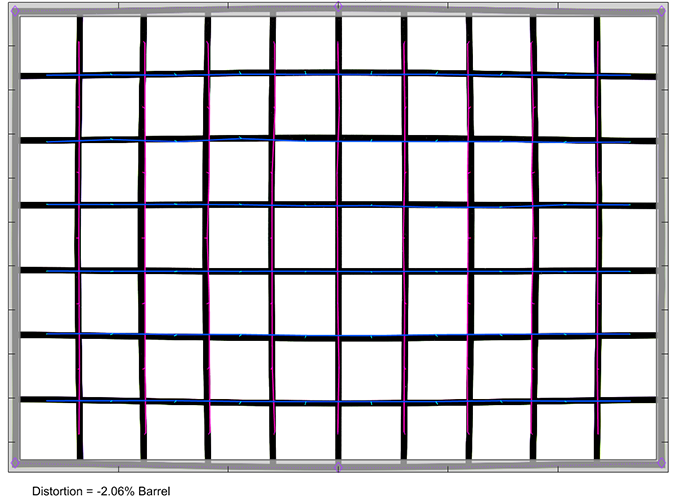
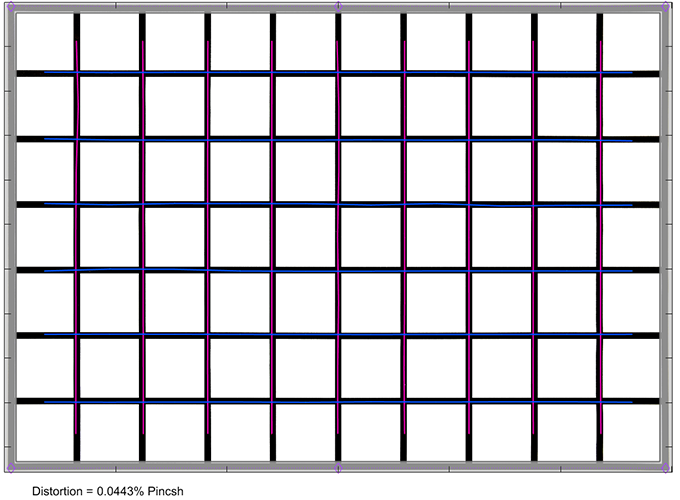

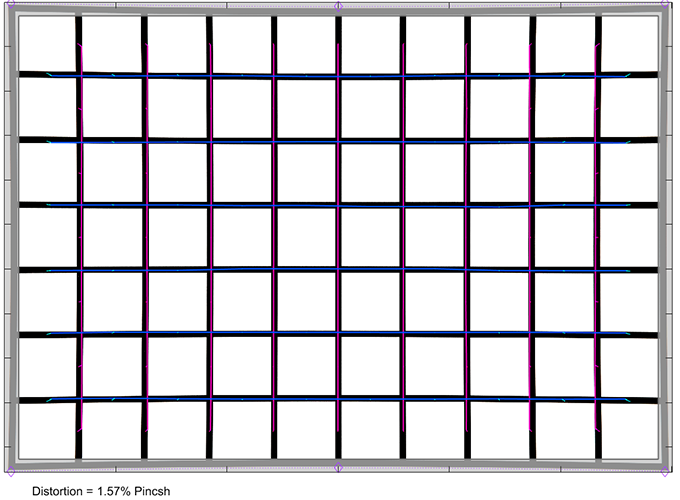
Of course, this is all mostly irrelevant (other than a slight decrease in corner resolution) with activated image auto-correction as you can see below.
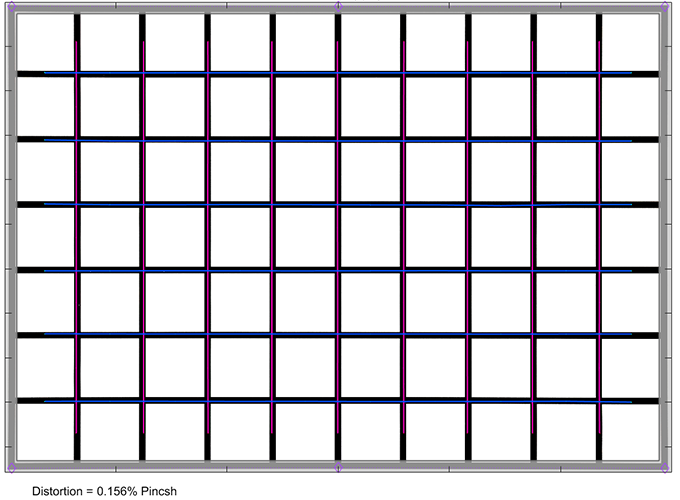

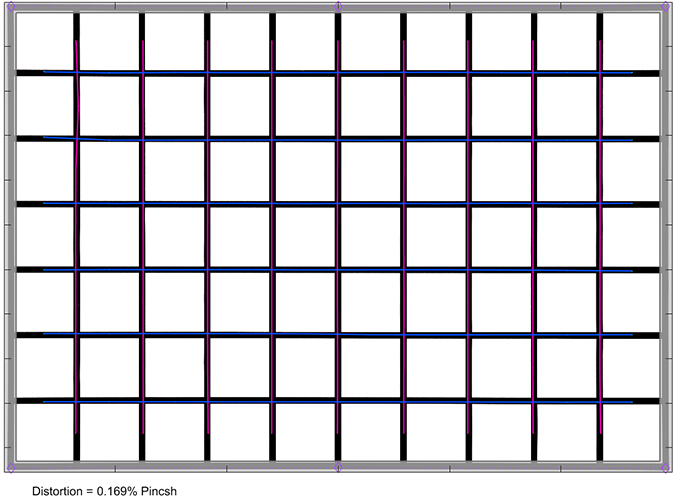

Vignetting
The vignetting characteristic comes as a bit of a surprise. The lens has a very large front element yet the vignetting is very high at 24mm f/2.8. Stopping down helps but not quite as much as you may have hoped. The light falloff remains very visible at f/8 at this setting. The issue isn’t quite as pronounced at longer focal lengths but still very noticeable at maximum aperture.
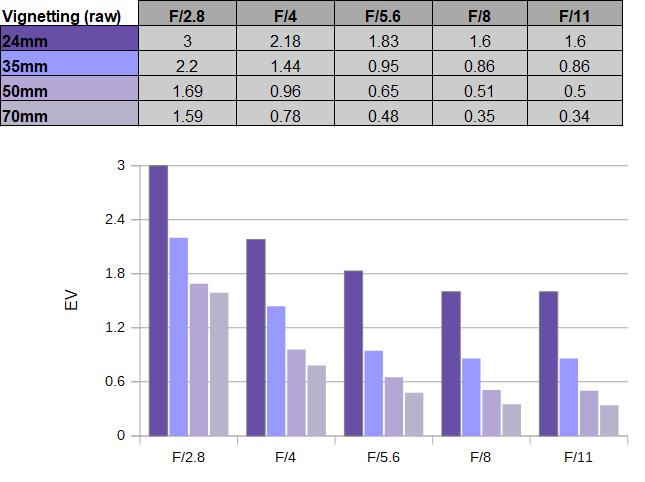
Once again, if you prefer to activate image auto-correction, the algorithm reduces the fall-off substantially although you can still spot a bit in the lower zoom range at large apertures.

MTF (resolution)
The Canon RF 24-70mm f/2.8 USM L IS is a very sharp lens overall but it also has its weaknesses. At 24mm the broader center zone is tack sharp straight from f/2.8. The borders are also very good. However, the corner quality could be better at maximum aperture. Stopping down to f/4 boosts the corners and they are very sharp indeed at f/5.6. The center and border characteristics remain intact at 35mm but the corner quality decreases somewhat overall. The sweet spot of the lens is around the 50mm mark where it exhibits no real weakness. As so often, the quality decreases at the long end of the range. Once again the broader center is great but the border quality decreases to good levels and the corners are a bit soft. Stopping down to f/5.6 solves most of this once again.
The field curvature is generally low. The centering quality of the tested sample was Ok.
Please note that the MTF results are not directly comparable across the different systems!
Below is a simplified summary of the formal findings. The chart shows line widths per picture height (LW/PH) which can be taken as a measure of sharpness. If you want to know more about the MTF50 figures, you may check out the corresponding Imatest Explanations

Chromatic Aberrations (CAs)
Lateral CAs (colors shadows in the outer image field) are generally quite low but if you are into pixel peeping, they are visible at 24mm at least – unless you activate image auto-correction.

Bokeh
A 24-70mm f/2.8 lens isn’t TERRIBLY fast but the large aperture and its shallow depth-of-field capabilities are, of course, one of the primary reasons for investing in such a lens. So rather than having a look at the sharpness, let’s switch to the discussion of the unsharpness (out-of-focus rendition) now.
Out-of-focus highlights show an onion-like substructure – probably related to the 3 aspherical elements in the design. Obviously, this is less than ideal. However, the highlights remain circular from f/2.8 to f/5.6 – thanks to the 9 rounded aperture blades.

The shape of the highlights tends to deteriorate towards the image borders – due to mechanical vignetting. However, the Canon behaves better than most in this respect in that the shape deteriorates “late”. As you can observe below, only the corner highlights are “cut”. Stopping down improves those highlights and they are pretty good at f/5.6.
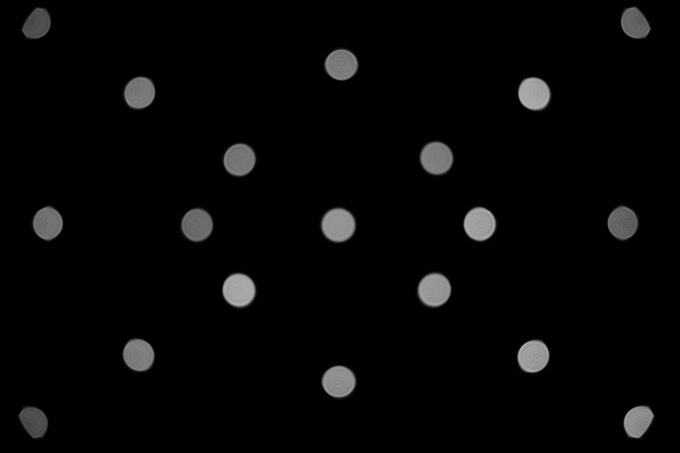


The general rendition in the focus transition zones is very smooth both in the background (to the left below) as well as the foreground (to the right).

Bokeh Fringing (LoCA)
Bokeh fringing – also referred to as LoCAs – is a color fringing effect on the Z-axis. It shows up as purplish halos in front of the in-focus zone and greenish beyond. The effect is clearly visible at f/2.8. Stopping down to f/4 reduces the fringing and there are traces left at f/5.6. Keep in mind that bokeh fringing is normal in all but a handful of very expensive APO lenses.



Sample Images
Competition
The only competition the Canon RF 24-70mm f/2.8 USM L IS (to the left below) has to face are its in-house cousins. Canon doesn’t share the communication protocol with other manufacturers so it will take a while until this situation changes (meanwhile Samyang succeeded in reverse-engineering). The Canon RF 28-70mm f/2 USM L (center) is the closest in scope. Its even larger aperture is quite an engineering feat. If speed is everything for you, it may be an interesting option – despite the even higher price tag and bigger size/weight. However, keep in mind that other than the shorter zoom range, you will also have to live without an image stabilizer thus it’s actually less aligned to (most) low-light photography despite being faster. On the more affordable side is the Canon RF 24-105mm f/4 USM L IS (right). For the vast number of photographers, it is actually the more sensible choice. Yes, it is a stop slower but it has, obviously, a range advantage and while the difference in price may give us the impression that it is optically inferior, this is not the case.

The Canon RF 24-70mm f/2.8 USM L IS is the best fast standard zoom lenses that we tested to date. However, this doesn't mean that it's flawless - standard zoom lenses never are. In terms of resolution, the broader center zone is superbly sharp at all relevant aperture settings. The border quality is also on a very high level. The corner quality varies a bit though. Except for the sweet spot at 50mm, the corners are a tad soft at f/2.8. However, they have recovered nicely at f/5.6 latest. These days you tend to correct the secondary characteristic via image auto-correction. However, when analyzing the raw qualities, the results reveal a couple of issues. The vignetting is rather extreme at 24mm f/2.8 for instance - and that's despite the very large front element. Complex image distortions are also quite obvious at 24mm and there are fairly visible pincushion distortions at 70mm. Lateral CAs are quite moderate albeit not zilch. The quality of the bokeh is very good as far as general rendition is concerned but not ideal with respect to out-of-focus highlights.
Please note that this may not sound overly enthusiastic but in real-life scenarios, the lens behaves very well. Who cares about tack sharp corners at f/2.8 when doing shallow depth-of-field photography for instance? And, as mentioned, auto-correction will help for most of the other aspects anyway. Still, keep in mind that you should balance all this with the price of 2500EUR/$2200.There is nothing to complain with respect to the build quality of the Canon RF 24-70mm f/2.8 USM L IS. It targets professionals and you can feel it. The materials and assembly quality are top of the class. Weather-sealing is a natural feature at this price point anyway. Some may not like the extending zoom mechanism - but fact remains that this is just normal for pretty much all standard zoom lenses. The AF is extremely fast and noiseless - you won't really miss a DSLR lens in this respect anymore. Canon finally managed to incorporate an image stabilizer into the lens - a feature that has been requested by users for several years - and it is as reliable and efficient as in other modern Canon lenses.
All in all a highly desirable workhorse lens for professional photographers although we also think that the pricing is over the top.
-
Optical Quality (30mp)
-
Build Quality
-
Price / Performance


